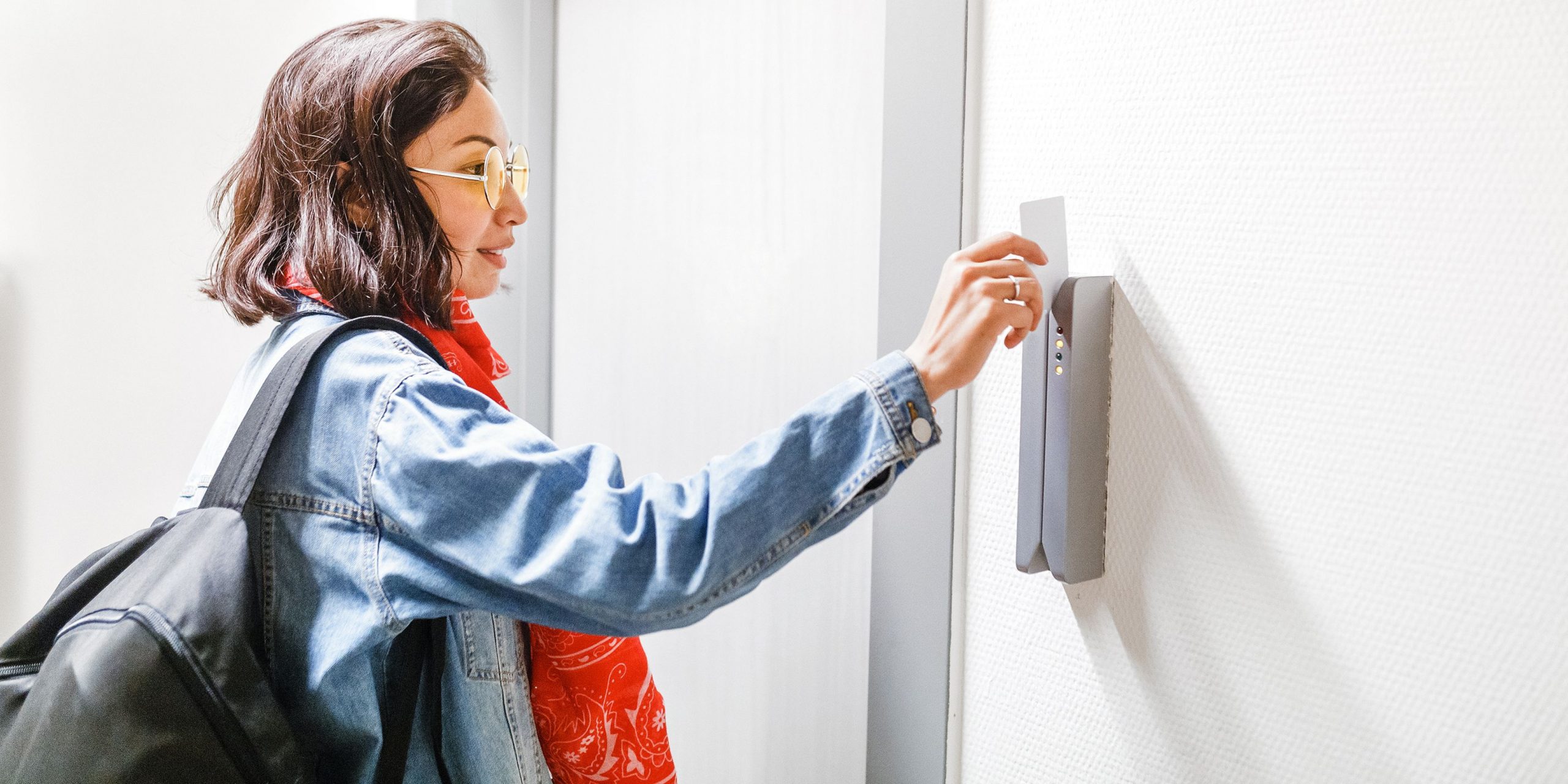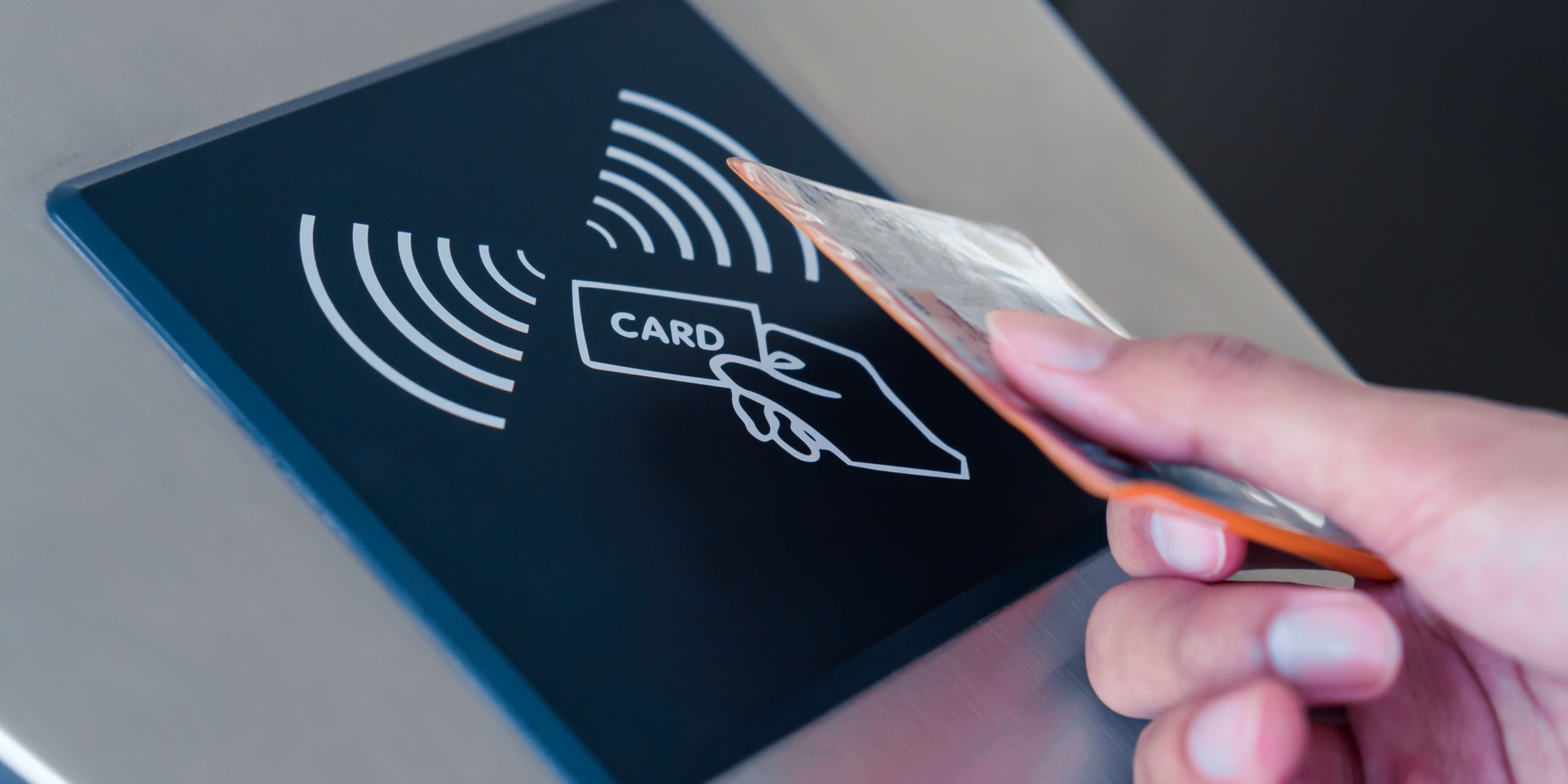Key card access systems, also known as key fob entry systems, provide an effective way to secure and manage entrances in various buildings or facilities. By utilizing a key card system, authorized personnel can access designated areas at specified times, preventing unauthorized entry and restricting access to sensitive locations. These systems enhance physical security and can be seamlessly integrated with commercial CCTV systems or alarm systems.
What is a Key Card System for Access Control?
A key card access solution combines card credentials, door card readers, and locks to control access to a building or space. The system verifies the information stored on the key card through a security card reader, permitting or denying access based on the assigned privileges.
Exploring Components of Card Access Control Systems:
- Door Key Cards: Embedded with chips storing user identity information.
- Key Card Scanner: Installed on doors and gates, reads information from electronic card keys.
- Controller: Main unit that communicates with the user database to open or close doors.
- Electronic Key Card Door Lock: Mechanisms that lock or unlock doors based on valid key card swipes.
- Multi-Factor Authentication (MFA) Devices: Some systems require a PIN code in addition to card swiping for added security.
- Access Card Systems Software: Manages user data, access rights, and system activity.
How Does a Key Card Access Solution Work?
A key card access solution operates using RFID or magnetic stripe technology, allowing users to tap, swipe, or use proximity to access secured areas. The key card stores individual details and, when swiped or brought close to the scanner, sends information to the controller. The controller verifies the user’s identity against the database, granting access and triggering additional security measures if necessary. For added security, keypads can be used, requiring a personal code in addition to the card. The door access card system software ties everything together, enabling businesses to track access and maintain control over entries.

Types of Key Card Access Control and Door Entry Systems
- Door Access Magnetic Card Reader Systems: These systems use magnetic stripe cards that require physical swiping for access. They are commonly found in places like offices and schools, offering a simple way to control access to specific areas. They can also be used for tasks like accessing printers or managing time and enrollment processes.
- Proximity Card Lock Systems: Using RFID technology, these systems allow cardholders to transmit data by placing the card near the reader. Proximity card lock systems provide enhanced security and are suitable for places with high foot traffic, ensuring quick access control. They can be programmed with different access rights for added security.
- Badge Access Systems: Badge access systems use ID badges with chips or RFID tags, often including additional user information for quick identification. These systems recognize authorized badges, rejecting unregistered ones. Ideal for places with a large workforce, they simplify tracking individuals accessing specific areas and offer a convenient solution by combining badges and key cards.
Benefits of a Key Card Door Entry and Lock System
Access card systems are widely used in commercial property security for good reason. While they may not be the most advanced technology available, key card door locks offer various benefits:
- Increased Security: Key card access door locks provide a secure means of controlling entry to buildings, parking lots, and sensitive areas. Unique codes programmed into key cards must match the system for entry, enhancing security compared to traditional keys or shared PIN codes.
- Improved Tracking: A door access card system offers real-time data on building entries and exits, aiding in identifying security breaches and monitoring activity. This data serves multiple purposes, including employee time tracking, visitor management, auditing, and forensic investigations.
- Increased Convenience: A card key access system eliminates the inconvenience of carrying physical keys. It grants quick and secure access to workplaces, reducing time and effort for entry and exit processes. Key card door locks are user-friendly, requiring only a tap or swipe, making them easier than traditional keys.
- Flexibility: Card key systems are easily updated to reflect changes in personnel or access privileges, providing a flexible and scalable solution. Key cards can also be programmed with expiration dates, automatically becoming inactive after a specified period.
- Easy Management: A centrally managed card access door lock system simplifies monitoring and control of access across multiple buildings or areas within a facility. This centralized approach allows businesses to swiftly update settings from one location, ensuring consistent security protocols and saving time and money.
- Cost-Efficiency: Key card door entry systems are cost-effective, with minimal installation costs and ongoing maintenance. In the event of a lost card, securing a door with card access only requires revoking access and replacing the card. This stands in contrast to traditional locks where losing a key necessitates lock replacement and key recutting, resulting in higher costs, especially in businesses with high turnover.
Disadvantages of Key Card Door Lock System
Card key locks, while providing enhanced security, convenience, and flexibility, have some drawbacks to consider before investing in access card systems for your business:
Security Risks:
- Damage-Prone: Door access cards can be easily damaged, disrupting building access and requiring replacements.
- Misplacement or Loss: Small and easily misplaced, key cards may need frequent replacements, posing a risk if lost in the wrong hands.
- Varying Wait Times: The time to create a new card can vary, leading to potential delays in access.
- Easy to Duplicate: Particularly swipe card entry systems are susceptible to cheap devices that can easily copy key cards.
Inefficiencies:
- Access Bottlenecks: Key card locks can cause bottlenecks if cards are lost or the system malfunctions, especially in swipe card entry systems.
- Time-Consuming Administration: Registering and revoking key cards can be time-consuming, impacting business operations. The ideal system should issue or revoke credentials instantly.
- Personal Issuance Required: Key cards must be given to employees in person or mailed, adding a step to the onboarding process.
- Unreliable Access: Proximity technology, while advanced, can be unreliable if the read range is not configured properly.
Challenges in Scaling:
- Lack of Centralized Management: Legacy systems may lack centralized management, posing challenges for businesses with multiple sites. Keyless entry systems offer simplified access management across various locations.
- Onboarding Delays: Delays in issuing key cards can lead to longer onboarding processes and lost revenue.
- Changes Requiring Re-issuance: System changes may necessitate re-issuing all key cards, adding complexity and cost.
- Multiple Cards Required: Personnel with access to multiple locations may need to carry multiple key cards, potentially increasing administrative burdens.
Factors Influencing Key Card System Cost
Investing in a key card system may initially seem cost-effective due to the relatively low price of key card door locks compared to other security systems. However, several factors influence the overall cost, impacting your budget:
- Building Size and Layout: The size and layout of the building determine the number of key card scanners, locks, and wiring needed. Complex layouts or multistory buildings add complexity and costs.
- Type of Card Reader: The chosen card reader with varying features and security capabilities affects costs. Advanced features, like support for multiple credentials or built-in video cameras, can increase the price.
- Number of Key Cards: The quantity of key cards required for personnel and third parties influences costs, considering both card expenses and administrative issuance costs.
- Software Requirements: The key card entry system’s software, essential for operational efficiency, may require upgrades or new installations, impacting costs. Intuitive software with remote access adds flexibility.
- Additional Security Features: Enhanced security features, such as integrated video surveillance or motion sensors, contribute to the cost but significantly improve security levels.
- Installation Fees: Professional installation, recommended for larger systems, adds to costs but enhances reliability. Installation expenses depend on system complexity.
- Maintenance Fees: Ongoing maintenance is essential for operational efficiency. Costs vary based on the system type, features, and potential software or hardware upgrades.
Integrating Key Card Entry Solutions with Existing Security Systems
Integrating key card access systems with other security measures brings significant benefits, enhancing safety, convenience, and return on investment. Combining various security technologies allows businesses to customize their security strategies:
- Intercom Systems: Integrate business intercom systems with key card access control for staff to communicate with visitors before granting access. Some systems combine intercom and card reader functions into a single device.
- Video Surveillance: Install video cameras with motion sensors alongside key card access door locks for real-time monitoring of premises and verification of access activity.
- Alarm Systems: Integrate key card systems with alarms to trigger alerts if unauthorized access is attempted, deterring unwanted visitors and keeping security personnel informed.
- Visitor Management: Connect your access card system with visitor tools for automatic creation of visitor permissions during meetings and issuance of custom key cards upon check-in.
- Biometrics: Enhance security with biometric control systems, such as face recognition or fingerprint scanners, serving as a multi-factor authentication method.
- Lockdown Solutions: Compatible with lockdown solutions, key card access systems allow easy activation of door locks with key card credentials in emergencies, facilitating rapid evacuations and minimizing losses.
Critical Questions to Consider When Planning a Key Card Access and Door Lock System
- Security:
- What level of security does the key card door lock system provide, including encryption and other security features?
- In the event of a lost or stolen key card, what measures are in place to promptly revoke access?
- Is there continuous monitoring to identify and address potential vulnerabilities or system failures?
- Efficiency:
- How straightforward is the process of issuing and revoking access to door locks using key cards?
- Do employees experience any delays when entering or exiting with their door key cards?
- What is the anticipated setup duration, and what ongoing maintenance requirements should be expected?
- Scalability:
- How seamlessly can new users be added or access levels adjusted within the door key card system?
- Does the card lock system support scalability to accommodate organizational growth or changing needs?
- Can the door access card reader system integrate with other credential types?
- User Experience:
- How intuitive and user-friendly is the access card system for employees?
- Does the system enhance the overall experience for users entering or exiting with their door key cards?
- Are there features in place to facilitate employees’ use, such as helpful tips or prompts?
- Integration:
- How easily can the key card door entry system be integrated with other systems, such as video surveillance and alarms?
- Does the vendor offer support for integrating with existing IT architecture?
- Is the key card access door lock system compatible with popular operating systems, browsers, and mobile devices?
- Cost:
- What are the initial costs associated with the installation and key card access door lock hardware?
- Are there ongoing costs for maintenance and upgrades?
- How does the overall cost compare with similar products available in the market?
- Support:
- Are technical support services available 24/7 if needed?
- Does the vendor provide assistance in troubleshooting and training users to correctly utilize the access card system?
- What is the company’s track record in terms of customer service and satisfaction?
Investing in a Key Card Access and Entry System for Business and Buildings
Key card access systems offer a practical, versatile, and cost-efficient solution for monitoring and controlling access. Considering security, efficiency, scalability, user experience, integration, support, and cost factors can guide businesses in selecting the right system for their needs. With a well-planned implementation, organizations can enjoy peace of mind, knowing their premises are secure.


